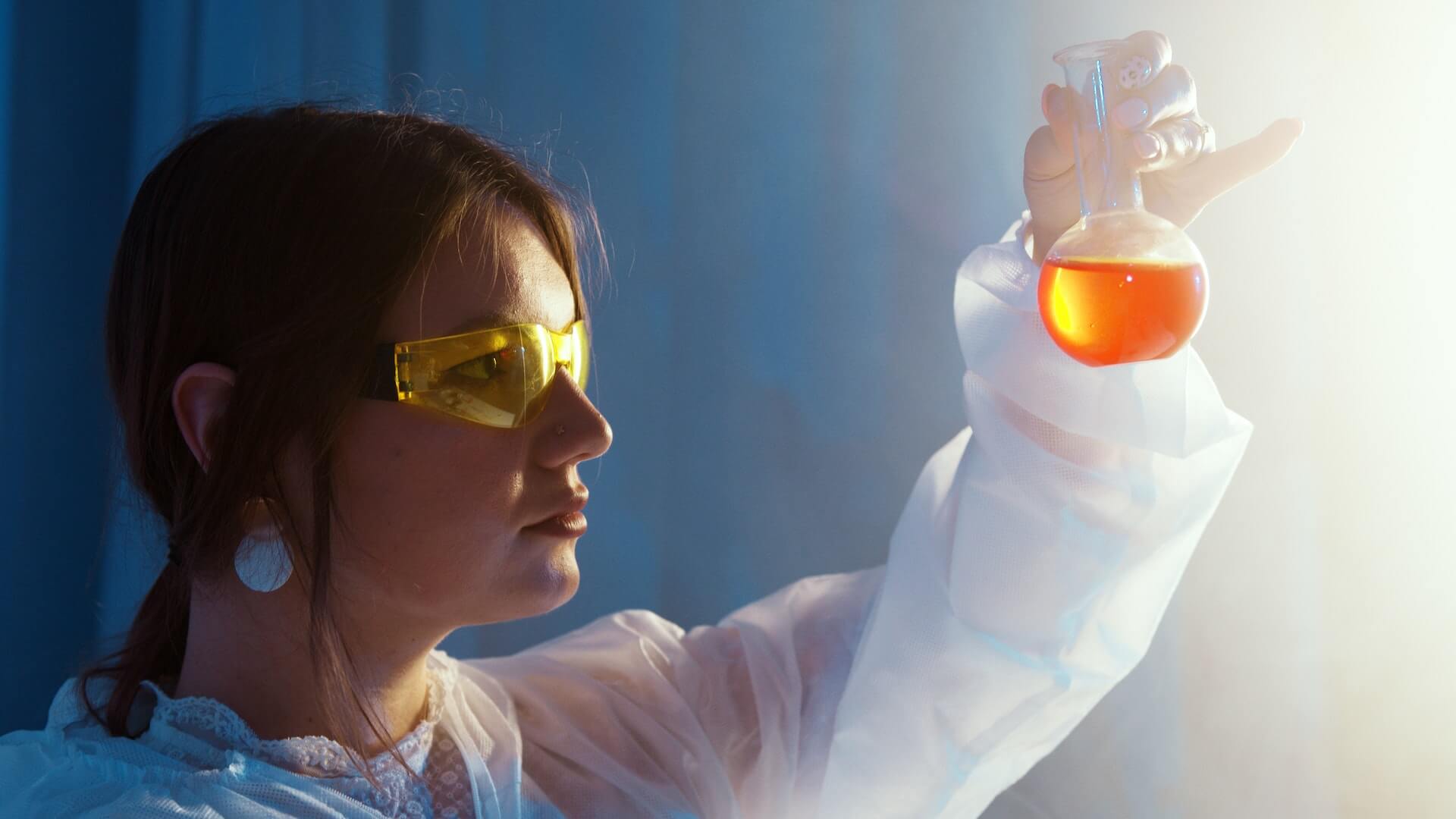As the world becomes more health-conscious, the importance of health sciences is becoming increasingly evident. Health sciences encompass a wide range of fields, including medicine, nursing, nutrition, and public health. In recent years, significant advancements have been made in these fields, and there is no doubt that the future of health sciences is bright. From the development of new treatments and technologies to the use of big data and artificial intelligence, the potential for innovation in health sciences is enormous. In this blog post, we will delve into some of the most exciting and promising breakthroughs and innovations in health sciences. Whether you’re a healthcare professional or simply interested in the latest developments in the field of health, this post is for you. Get ready to be inspired by the future of health sciences!
Introduction: The rapidly evolving landscape of health sciences
The field of health sciences is undergoing a remarkable transformation, driven by groundbreaking innovations and breakthroughs that have the potential to revolutionize the way we approach healthcare. With advancements in technology, research, and interdisciplinary collaborations, the future of health sciences holds immense promise for improving human well-being and addressing the most pressing challenges in the field.

One of the key drivers of this rapid evolution is the advent of precision medicine, which aims to tailor medical treatments to individual patients based on their genetic makeup, lifestyle factors, and specific health conditions. This personalized approach holds great potential for more effective treatments, reduced side effects, and improved patient outcomes.
Furthermore, the integration of big data analytics and artificial intelligence (AI) has opened up new avenues for healthcare research and delivery. By harnessing the power of data, researchers and clinicians can gain valuable insights into disease patterns, predict health outcomes, and develop targeted interventions. AI-powered systems can assist in diagnosis, treatment planning, and monitoring, enhancing efficiency and accuracy in healthcare delivery.
Additionally, the emergence of innovative technologies such as telemedicine and wearable devices has significantly expanded access to healthcare services and empowered individuals to take charge of their own health. Telemedicine enables remote consultations and monitoring, eliminating geographical barriers and ensuring timely care, especially in underserved areas. Wearable devices provide real-time health data, enabling individuals to track their fitness levels, vital signs, and overall well-being, promoting proactive healthcare management.
Moreover, breakthroughs in genetic engineering, regenerative medicine, and stem cell research offer promising solutions for previously untreatable conditions. Gene editing technologies like CRISPR-Cas9 hold the potential to correct genetic mutations and eradicate hereditary diseases. Regenerative medicine approaches aim to regenerate damaged tissues and organs, offering hope for conditions such as spinal cord injuries and organ failure. Stem cell research continues to unravel the regenerative potential of these versatile cells, paving the way for novel therapies in various fields of medicine.
As we delve deeper into the future of health sciences, it is essential to recognize the ethical, legal, and societal implications of these advancements. Balancing scientific progress with responsible innovation and ensuring equitable access to these transformative technologies are critical considerations for a sustainable and inclusive healthcare system.
Artificial Intelligence and Machine Learning in Healthcare
AI and ML algorithms can analyze vast amounts of medical data, including patient records, lab results, imaging scans, and research papers, to identify patterns and make accurate predictions. This capability enables healthcare professionals to diagnose conditions more efficiently and develop personalized treatment plans tailored to each patient’s unique needs.
One of the significant applications of AI and ML in healthcare is in medical imaging. These technologies can analyze radiology images, such as X-rays, CT scans, and MRIs, with incredible precision. They can quickly detect abnormalities, flag potential areas of concern, and assist radiologists in making accurate diagnoses. This not only speeds up the diagnostic process but also reduces the chances of human error.
Another area where AI and ML are making significant contributions is in drug discovery and development. Traditional methods of discovering new drugs are time-consuming and costly. AI algorithms can sift through massive databases of molecular structures and predict the effectiveness of potential drug candidates. This accelerates the drug discovery process, allowing researchers to identify promising candidates more quickly.
In addition to diagnosis and drug discovery, AI and ML are also being used for remote patient monitoring, predicting disease outbreaks, optimizing hospital operations, and improving the overall efficiency of healthcare systems.
However, as with any technological advancement, there are challenges and ethical considerations to address. Ensuring data privacy and security, maintaining transparency and explainability of AI algorithms, and addressing biases in training data are some of the crucial areas that need attention.
Genomics and Precision Medicine: Personalizing Healthcare
Genomics refers to the study of an individual’s genetic makeup, including their DNA sequence and variations. With advancements in technology, scientists are now able to decipher the genetic code of individuals with greater accuracy and at a faster pace. This wealth of genetic information holds immense potential in understanding the underlying causes of diseases and developing targeted treatments.
Precision medicine takes genomics a step further by tailoring medical interventions to an individual’s specific genetic profile. Instead of adopting a one-size-fits-all approach, precision medicine recognizes that each person’s genetic makeup is unique, influencing their susceptibility to diseases, response to treatments, and overall health outcomes.
By analyzing an individual’s genetic information, healthcare professionals can gain insights into their predisposition to certain diseases, allowing for early detection and targeted preventive measures. Moreover, precision medicine enables the development of personalized treatment plans that consider an individual’s genetic variations, ensuring the most effective and least harmful interventions.
The potential applications of genomics and precision medicine are vast. From cancer treatment to rare genetic disorders, these advancements offer hope for more effective therapies, reduced side effects, and improved patient outcomes. Additionally, genomics and precision medicine can empower individuals to take a proactive role in their own health by providing them with valuable information about their genetic predispositions and lifestyle choices that can optimize their well-being.
However, as with any emerging field, there are challenges that need to be addressed. Ensuring equal access to genomic testing and precision medicine is crucial to avoid exacerbating existing healthcare disparities. Additionally, ethical considerations surrounding the use and storage of genetic data must be carefully addressed to protect individuals’ privacy and maintain public trust.
Telemedicine and Remote Patient Monitoring
Telemedicine and remote patient monitoring have emerged as game-changing innovations in the field of health sciences. With advancements in technology and the rapid growth of internet connectivity, healthcare is no longer limited to traditional face-to-face consultations.

Telemedicine allows healthcare professionals to remotely diagnose and treat patients using telecommunications technology. This means that patients can receive medical advice, prescriptions, and even participate in therapy sessions without the need for physical visits to the doctor’s office. This not only saves time and money for both patients and healthcare providers but also ensures that people in remote or underserved areas can access quality healthcare.
Remote patient monitoring takes telemedicine a step further by enabling healthcare professionals to monitor their patients’ health conditions remotely. This is particularly beneficial for patients with chronic illnesses or those who require continuous monitoring. Through wearable devices and sensors, patients can track their vital signs, such as heart rate, blood pressure, and glucose levels, and transmit this data to their healthcare providers in real-time. This allows for early detection of any abnormalities or changes in health status, leading to timely interventions and improved patient outcomes.
The future of health sciences undoubtedly lies in the expansion and integration of telemedicine and remote patient monitoring. As technology continues to advance, we can expect even more sophisticated devices and platforms that will revolutionize the way healthcare is delivered. From virtual consultations with specialists located thousands of miles away to personalized treatment plans based on real-time patient data, the possibilities are endless.
Wearable Technology and Health Tracking
Wearable technology has revolutionized the way we approach health and wellness. With the rapid advancements in this field, we are witnessing a remarkable integration of technology and healthcare, giving rise to a new era of personalized health tracking.
Gone are the days when tracking your steps or monitoring your heart rate required bulky devices or complicated machinery. Today, wearable technology has made health tracking more accessible and convenient than ever before. From smartwatches to fitness bands, these sleek and stylish gadgets are equipped with sensors that can monitor various aspects of our health.
One of the key benefits of wearable technology is its ability to provide real-time data about our physical activities, sleep patterns, and even stress levels. This data can be crucial in helping individuals make informed decisions about their lifestyle and overall well-being. For instance, tracking your steps throughout the day can motivate you to be more active and meet your fitness goals.
Moreover, wearable devices can also monitor vital signs such as heart rate, blood pressure, and even oxygen levels. This continuous monitoring enables individuals to detect any abnormalities or potential health risks early on, allowing for timely intervention and prevention of potential complications.
Another exciting aspect of wearable technology is its integration with mobile applications and other smart devices. This connectivity allows for seamless data synchronization and analysis, providing users with comprehensive insights into their health trends and progress. It also enables healthcare professionals to remotely monitor and manage their patients’ health, enhancing the efficiency and effectiveness of healthcare delivery.
Looking ahead, the future of wearable technology in health sciences holds even more promise. Researchers are exploring the integration of advanced sensors that can detect biomarkers indicative of various diseases. This could potentially revolutionize the way we diagnose and treat medical conditions, leading to earlier detection, more personalized treatment plans, and improved patient outcomes.
Robotics and Automation in Healthcare
The field of healthcare is constantly evolving, and one of the most exciting developments in recent years is the integration of robotics and automation. These technologies have the potential to revolutionize the way healthcare is delivered, improving patient outcomes and streamlining processes.
Robots are being used in a variety of healthcare settings, from hospitals to nursing homes. Surgical robots, for example, are assisting surgeons in performing delicate and complex procedures with precision and accuracy. These robots can navigate through tight spaces, enhance visualization, and minimize invasive procedures, resulting in reduced recovery times and better surgical outcomes.
Automation is another area where healthcare is seeing significant advancements. Automated systems can help with tasks such as medication dispensing, inventory management, and patient monitoring. This not only reduces the risk of errors but also frees up healthcare professionals to focus on delivering personalized patient care.
In addition to these practical applications, robotics and automation are also driving innovation in research and development. Robot-assisted laboratories are enabling scientists to conduct experiments more efficiently, analyze data at a faster pace, and accelerate the discovery of new treatments and therapies.
While there are concerns about the potential job displacement that may come with increased automation, it’s important to recognize the immense benefits these technologies can bring to the healthcare industry. By leveraging robotics and automation, healthcare providers can improve efficiency, enhance patient care, and ultimately save lives.
Virtual Reality and Augmented Reality in Medical Education
In medical education, VR and AR offer a wide range of possibilities. With VR, students can be transported into virtual environments where they can explore the human anatomy in 3D, dissect virtual bodies, and practice surgical procedures in a simulated setting. This hands-on approach allows for a deeper understanding of complex concepts and enhances the learning experience.
AR, on the other hand, overlays virtual information onto the real world, supplementing the physical environment with digital elements. This technology can be used to enhance medical training by projecting virtual patient data, such as medical images or vital signs, onto a physical mannequin or a real patient. This provides students with a more comprehensive understanding of a patient’s condition and helps them make accurate diagnoses and treatment decisions.
Moreover, VR and AR can bridge the gap between theory and practice by simulating real-life scenarios. For instance, medical students can encounter virtual patients with different symptoms and medical histories, allowing them to practice clinical decision-making and develop critical thinking skills in a risk-free environment.
The integration of VR and AR into medical education not only enhances the learning process but also opens up opportunities for remote learning and collaboration. With these technologies, students can participate in virtual classrooms, attend virtual conferences, and collaborate with peers and instructors from around the world, breaking down geographical barriers and fostering a global community of healthcare professionals.
Bioprinting and Organ Transplants
Bioprinting, also known as 3D bioprinting, is a cutting-edge technology that enables the fabrication of living tissues and organs using specialized 3D printers. The process involves the precise layer-by-layer deposition of bioinks, which are composed of living cells, biomaterials, and growth factors. This groundbreaking technique allows for the creation of complex and functional biological structures that can be customized to match the specific needs of patients.

The implications of bioprinting are immense, particularly in the field of organ transplants. Currently, there is a significant shortage of viable organs available for transplantation, leading to long waiting lists and countless lives lost. Bioprinting offers a potential solution to this critical issue by providing a means to engineer organs on-demand. By using a patient’s own cells as the building blocks, the risk of organ rejection can be significantly minimized, making transplants more successful and accessible.
One of the notable achievements in bioprinting is the successful transplantation of 3D-printed organs in animal models. Researchers have successfully printed and implanted functional tissues such as skin, blood vessels, and even small-scale organs like ears and kidneys. These remarkable milestones serve as a testament to the immense potential of this technology in overcoming the limitations of traditional organ transplantation methods.
Moreover, bioprinting opens up avenues for personalized medicine. With the ability to create patient-specific organs, treatments can be tailored to individual needs, resulting in improved outcomes and enhanced patient care. This personalized approach has the potential to revolutionize the healthcare industry, paving the way for more effective and efficient treatments.
While bioprinting and organ transplants still face various challenges, including the complexity of replicating intricate organ structures and the need for further research and development, the progress made thus far is undeniably remarkable. As technology continues to advance, it is not far-fetched to imagine a future where organ shortages are no longer a concern and patients can receive life-saving treatments that were once deemed impossible.
Nanotechnology in Medicine
Nanotechnology has emerged as a groundbreaking field in medicine, revolutionizing the way we diagnose and treat diseases. It involves manipulating matter at the nanoscale, typically measuring in billionths of a meter, to create innovative solutions for various health challenges.
One of the most promising applications of nanotechnology in medicine is in targeted drug delivery. By engineering nanoparticles with specific properties, such as size, shape, and surface charge, researchers can enhance drug efficacy and minimize side effects. These nanoparticles can be designed to selectively deliver drugs to specific cells or tissues, increasing their therapeutic potential while reducing the impact on healthy cells.
Moreover, nanotechnology has paved the way for advanced diagnostic techniques. Nanosensors can be engineered to detect specific molecules or biomarkers associated with diseases, enabling early detection and personalized medicine. This level of precision allows for more accurate diagnoses and tailored treatment plans, ultimately improving patient outcomes.
Additionally, nanotechnology offers solutions for regenerative medicine and tissue engineering. Researchers are developing nanomaterials that mimic the natural extracellular matrix, providing a scaffold for cells to grow and regenerate damaged tissues. This approach holds immense potential for treating conditions such as organ failure, spinal cord injuries, and degenerative diseases.
Furthermore, nanotechnology has opened up new possibilities in imaging and imaging-guided therapies. Nanoparticles can be engineered to enhance contrast in imaging techniques such as magnetic resonance imaging (MRI) and computed tomography (CT), enabling earlier detection of diseases. Additionally, these nanoparticles can be used in targeted therapies, where they deliver therapeutic agents directly to the site of disease under the guidance of imaging techniques.
Challenges and Ethical considerations for the future of health sciences
While advancements in technology and research offer exciting possibilities, they also raise important questions and concerns.
One of the primary challenges is the rapid pace of innovation. As new technologies emerge and breakthroughs are made, it can be difficult for ethical guidelines and regulatory frameworks to keep up. Ensuring that these advancements are implemented safely and responsibly will require ongoing discussions and collaboration among scientists, policymakers, and ethicists.
Another challenge is the potential for unequal access to healthcare innovations. As new treatments and therapies are developed, it is essential to ensure that they are accessible and affordable for all individuals, regardless of their socioeconomic status or geographical location. This requires addressing issues of affordability, distribution, and equity in healthcare systems worldwide.
Ethical considerations also come into play when it comes to genetic research and manipulation. As we gain more knowledge about the human genome and have the ability to edit genes, questions arise about the potential consequences and implications. Striking a balance between scientific progress and the ethical boundaries of genetic engineering will be a crucial task for researchers and policymakers.
Furthermore, privacy and data security are key ethical concerns in the future of health sciences. With the increasing use of electronic health records, wearable devices, and telemedicine, protecting patient information and ensuring confidentiality becomes paramount. Safeguarding personal health data while harnessing its potential for research and personalized medicine will require robust data protection measures and strong ethical guidelines.
Conclusion
From advancements in precision medicine to the use of artificial intelligence in diagnostics, the possibilities are endless. As researchers and scientists continue to push the boundaries of what is possible, we can expect to see significant improvements in patient care, disease prevention, and overall healthcare outcomes. It is an exciting time to be a part of the health sciences field, and we eagerly await the transformative advancements that will shape the future of healthcare.



